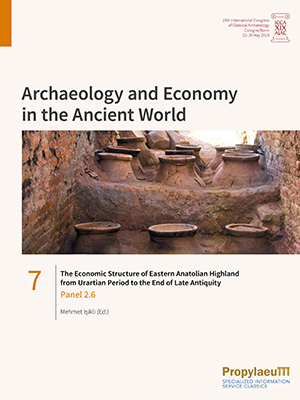
How to Cite
License

This work is licensed under a Creative Commons Attribution-ShareAlike 4.0 International License.
Identifiers
Published
The Economic Structure of Eastern Anatolian Highland from Urartian Period to the End of Late Antiquity
Panel 2.6
The Eastern Anatolian Highlands was one of the prominent sub-regions of the ancient Near East due to its very specific location. This region, which has rugged geographical features and harsh climate conditions, is situated between Northern Mesopotamia, the Southern Caucasus, Northwestern Iran and Central Anatolia, each of which were important cultural regions of the Near East. The Eastern Anatolian Highlands have played an important role in the economic networks and cultural relationships developed between the southern and northern regions through the ages. Despite its difficult geography and unfavourable climate conditions, the region hosted many cultures and societies through time on account of its strategic location and richness in natural resources and raw materials. The archaeological evidence shows that the initial periods of centralization and state formation in the region began with Urartu and continued through time. The most important factor in this regard is the fact that the region effectively functioned as a transit point on account of its strategic geographic position. Thereafter, the economic and political structures in this mountainous zone of the Near East are more easily observed. The economic structures of this marginal zone of the ancient Near East will be analysed from the Urartian period to the end of Late Antiquity in this session.






